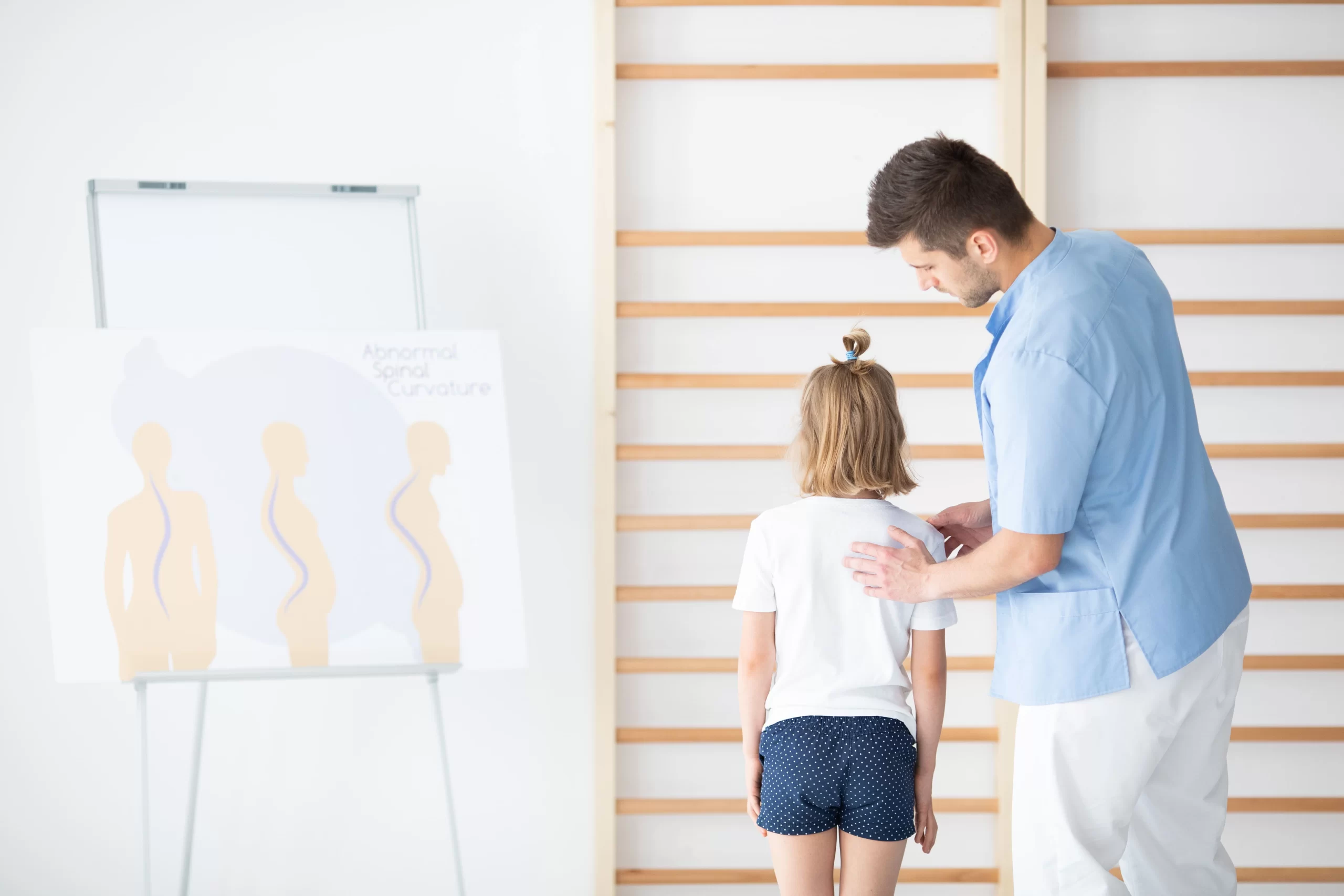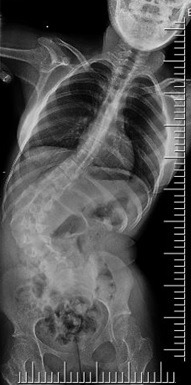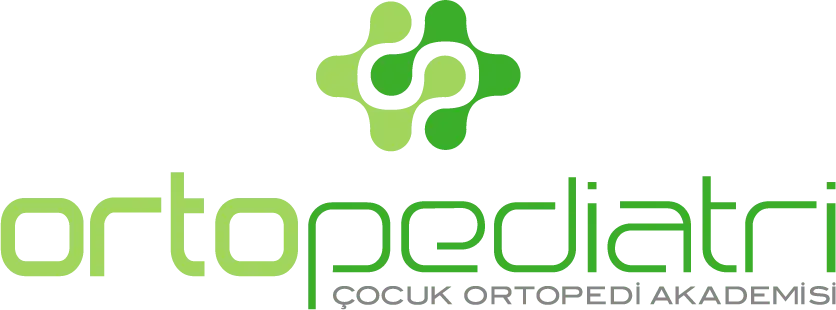Adolescent Idiopathic Scoliosis
Scoliosis, which is commonly seen in the community, is mostly seen in the age groups of 10-18 years and predominantly in girls. The cause of scoliosis for which an early diagnosis is of great importance for the treatment, is unknown.

The spine is straight when viewed from the back and front side. However, in the case of scoliosis, the spine seems as being curved to the left or right. Scoliosis, which is seen in 2% to 4% of the population, manifests itself especially during adolescence. For this reason, it is useful to examine the girls and boys without any complaints by a pediatric orthopedist at the ages of 10 and 12 and the age of 13 or 14, respectively.
How Scoliosis is Understood?
Scoliosis can occur at any age. However, the most common form of scoliosis is described as idiopathic. This is called as the exact cause is unknown. The spine has a curvature of 10-20 degrees in 2% to 3% of the adolescents. A curvature of above 30 degrees is seen in 0.3% of them. This is not a rate to be underestimated. Therefore, families having adolescent children should observe their children very well.
If there is a difference between two shoulders
If there is a difference in length between two legs
If one of the pelvises is at a higher level than the other
If there is difference in feet posture and loading
If the ribs of one chest are in front of, or behind, the other
If one of the shoulder bones has become pronounced
The family should consult a physician. However, there is a belief in the community that carrying heavy bags causes scoliosis. But, this is not true. If a child has scoliosis, carrying a heavy bag will only accelerate the course of the disease. However, if the child does not have a curvature in the spine, carrying a heavy bag does not cause scoliosis.
Early Diagnosis is Important
Examination findings are important in the diagnosis of scoliosis. The final diagnosis is made by an x-ray examination. In many scoliosis cases, MRI is not necessary. MRI is needed in the presence of another disease involving the skeletal system and the diseases involving the nervous system (brain and spinal cord), or when the child has both scoliosis and kyphosis (hunchback).
Is Surgery Necessary?
Surgical intervention is not necessary in all scoliosis cases. First, the degree of curvature of the spine is considered.

If the curvature is between 10-20 degrees, the patient is observed.
If there is a curvature between 25-45 degrees and the height growing of the child has not yet slowed down, then the treatment with a corset is applied.
What is important in the corset treatment is to measure the body of the child and give a corset accordingly. The child should wear this corset for an average of 20-22 hours per day until the development of the skeleton is completed.
Surgical intervention is essential for the spine curvatures of above 45 degrees. During adolescence, the operation for scoliosis is very useful and necessary in order to correct the curvature and prevent it from increasing during the period when the child grows rapidly.
After the operation, the patient should be hospitalized for five days. The patient should be enabled to walk with help from the first day of surgery. The patient is able to walk on his/her own within three weeks.
Types of Scoliosis And Treatment Processes
Apart from scoliosis seen during adolescence, there are other types of scoliosis in the community.
Neuromuscular Scoliosis
It is the second most common type of scoliosis. There is an underlying neuromuscular disease in this type of scoliosis. Examples are diseases such as cerebral palsy, polio, meningomyelocele (Spina bifida), etc.
Congenital Scoliosis
It is a type of scoliosis that is noticed during delivery and even pregnancy. The risk is increased in the case that the mother uses alcohol, or she has diabetes. It is accompanied by many congenital anomalies. The treatment is great different than that of idiopathic scoliosis. Nowadays, magnetically controlled growing rod systems are used in surgeries. These rods are extended in 2-3 months under clinical conditions by a remote control without any operation and pain. Thus, height growing of the child does not pose a problem.
Early-Onset Scoliosis
Early-onset scoliosis is seen in children between the ages of 4 and 10. It is more common in girls and often associated with syndromes that affect the brain and spinal cord. Early detection is critical, and its follow-up and treatment process closely resemble that of congenital scoliosis. Depending on the progression, treatment may involve observation, bracing, or advanced surgical methods such as growth-friendly spinal implants.
Degenerative Scoliosis
It is a manifestation of scoliosis at the age group of 40 or 50, which cannot be noticed during adolescence. Surgery is essential for definitive treatment. The curvature is corrected by the surgery. And the spines causing problems are immobilized with the process called fission.
Infantile Idiopathic Scoliosis
It is a rare type of scoliosis that is not seen during delivery but seen at the age of 4 is more common in boys. It manifests itself with brain and spinal cord problems.

